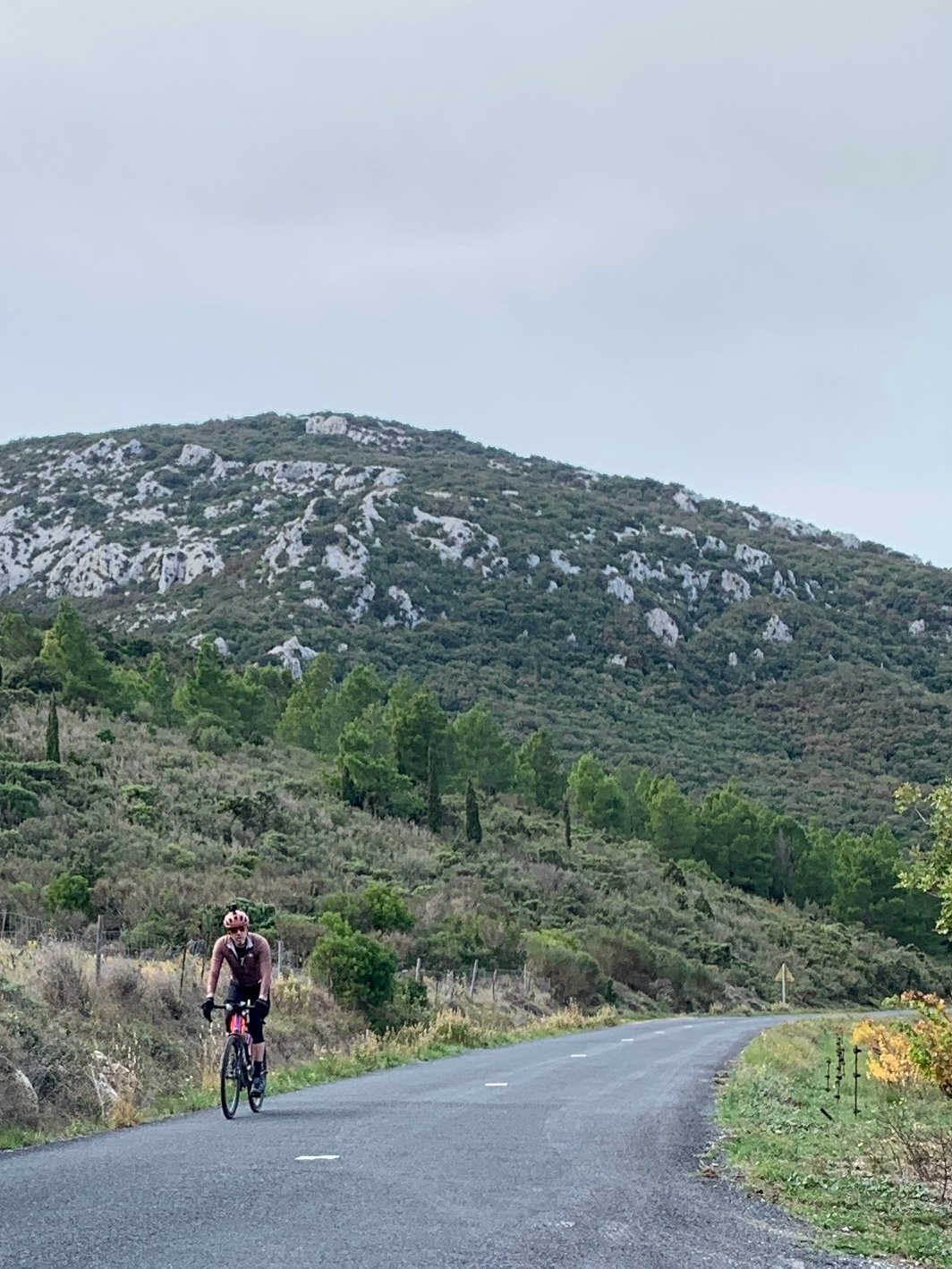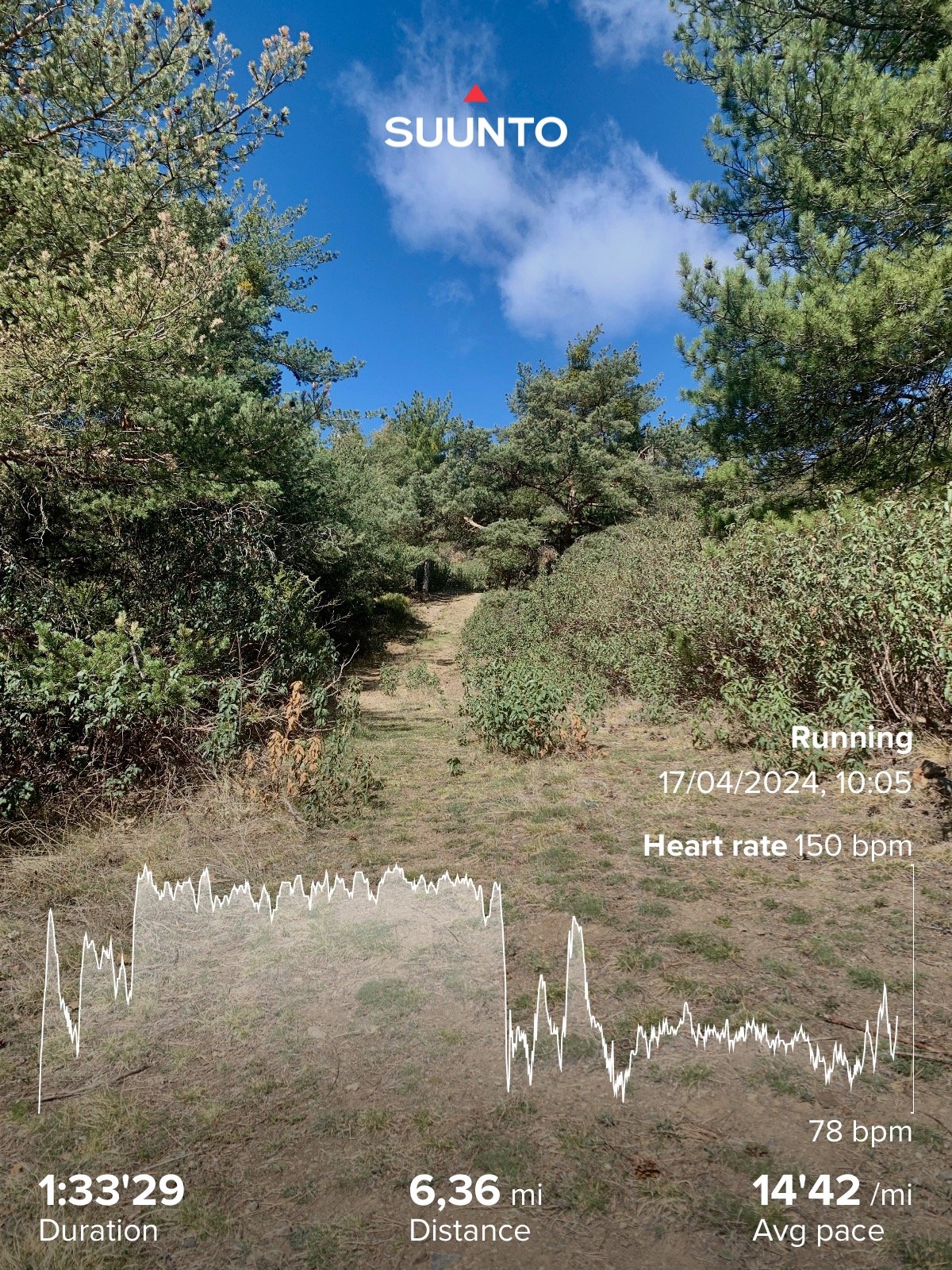Long endurance events are by their nature tough; but add some decent elevation into the mix and they get a whole lot tougher and take a lot longer to complete. This not only means more time in the saddle (or on your feet) but can make cut off times harder to achieve even with some generous extensions to account for the climb.
So how do you get better at long hilly courses? The simple answer is get better at climbing and descending but this can be tricky, especially if you don't live near any big hills. Here are a few things I suggest for athletes training for hilly courses to help them perform better and get round more comfortably:-
- Speed sessions on an incline
- Descending skills
- Hill replacements
- Strength training
- Practise on the course/similar course profile
Speed sessions on an incline
Doing speed sessions on an incline whether that's sprints, VO2Max, Functional Threshold Power or Tempo workouts will help you get better at climbing.

Sprints and VO2Max sessions help you get the power and strength you need which complement your uphill endurance.
Functional Threshold Power Workouts on an incline help you achieve good skills and efficiency as well as enabling you to climb for longer. These can be a good trade off for tempo climbs if you live in a place with some hills that are not very long.
Tempo (Zone 3) Climbs are perfect as they imitate what you will be doing for some of your climbing in your event and improve your uphill endurance, but they do require you to have access to some hills of decent length. Increasing time in zone (Zone 3) week on week will enable you to see progress.
For cyclists you may progress from 3 by 20 minutes to 3 by 40 minutes in your zone 3. Alternatively you could aim to do a continuous climb if you have one available.
For runners I usually aim for a continuous climb starting at 20-30 minutes and depending on the athlete and the demands of their event up to 90 minutes of uphill running in zone 3.
Doing some decent long endurance off the back of (ie the next day) longer hill repeats at Functional Threshold or zone 3 can be a good way to improve your overall endurance and build some decent volume into your weekend block of training.
Descending skills
Getting better at descending can really improve your average speed, as well as your confidence, on hilly courses. They can also mean that you descend more safely.

The simplest way to get better at descending is to do it, but it can be useful to get some tips from coaches/people who are good at descending. Some bike (and running) clubs offer skills based sessions which can include bike handling and descending. There is also a wealth of information on YouTube (not all of it good so be selective).
The key with skills is to break it down into components and practise each of the components you know need work.
For cycling the components of descending include:
- Speed and braking
- Cornering
- Over-taking
- Dealing with traffic (if applicable)
- Riding in a group
- Gapping (in mountain biking)
- Picking the line (especially off road)
- Body position
- Looking up and ahead
For running the components include:
- Speed and cadence
- Over-taking
- Pacing
- Rocky terrain
- Loose terrain (Scree)
- Very steep terrain
- Body position
- Picking the line
- Foot work
- Being able to react to others in a race
For running your descending style might change depending on the length of the hill; for short steep descent it can be ok to lean forward and let your steps break your fall, but for longer descents or courses where you are doing a lot of descending and then climbing again this style can over-work your quads and is difficult to maintain for long periods of time.
Hill replacements
For those of you living in flatter areas it can be difficult to get some decent training on an incline. Some people therefore choose to travel and do blocks of hill training on weekends or training camp style events.
However you can also do the following types of sessions to help with hill training:
Short high intensity hill repeats - a short hill of 30s to a minute is enough and you can do repeats where you pedal (or run) up hard and use the descent back down to the starting point to recover. 3 sets of 5 repeats, building over a few weeks to 3 sets of 8 repeats can be a good way to improve uphill strength and form for both cycling and running.
Indoor trainer - depending on the trainer you may need only choose a hilly course on Zwift to get the training effect; or you may need to set an incline and/or increase the resistance on the trainer. This may not change the bike position however which can be significant and something to consider for your event.
For runners you can use steps to imitate steep inclines by either using the stepper in the gym or steps in a building/outside.
Resistance training - If you live in a particularly flat but windy area riding/running into the wind, while not the same, creates some kind of resistance for you to train against helping you build up some fitness for cycling/running up hill. Cyclists can also do some training in a harder gear on the flat with a similar effect.
Speed workouts - Whether on an incline or not, doing sessions targeted at your Functional Threshold Power (or Pace) and shorter harder efforts at around your maximum five minute power or pace will improve your overall fitness and your ability to climb as a consequence. It can be a good idea to do this type of training in blocks for around 6 weeks. So 6 weeks focussing on your Functional Threshold Power (or pace) and then 6 weeks focussing on some shorter harder efforts.
Strength training
Strength training can also really help your uphill power and endurance and can be a good way to build a solid foundation in the off season or to complement flatter training as you enter the build period. Great exercises to improve uphill strength work and build strength in your quads (and to a lesser extent your hamstrings) and include:
- Squats - there are many variations of this exercise it can be a staple to your strength programme without you getting bored! Ideally you are looking for the squats that focus on quad strength (although runners may also look for variations that demand a greater range of motion and/or require some balance).
- Leg Press - double or single leg this is an exercise which will enable you to strengthen you the tops of your hamstrings as well as your quads.
- Dead lifts - deadlifts, as squats have many variations all of which target multiple muscle groups, including the quads and back. If you are very short on time/hate strength doing just deadlifts can help you make decent improvements.
- The Clean - tricky to perform safely but once mastered this is another exercise that targets multiple muscle groups.
Practise on the course/similar course profile
The more you can imitate the demands of your event in training the more prepared you will be. This doesn't mean doing the whole distance, but it can mean reccying sections of the course if possible. It can be a good idea to reccy sections that you are most frightened of ("that" hill or "that" descent) so you can come into it confidently on race day.

If you can't practise on the course, looking at the course profile, the length and steepness of the hills and trying to imitate sections of this in training is a good alternative. I usually look at the overall climb (on the hardest day of a multi day event) and make sure I have covered a similar amount in training either over the course of a weekend block or in one training session. This would include where possible the profile (so if it is one big climb I would aim to cover it like that, if it's multiple climbs and descents I would aim to cover it like that).
I usually start by breaking the course down into different components and then as the plan progresses start putting some components together.
Additional Questions
How do I increase my confidence? - sometimes, despite good training athletes can lack confidence in certain aspects of hills. You can use psychological skills to help with this, include Neuro-linguistic programming, mindfulness and self-talk.
Do I need to fuel more on climbs? You may be using significantly more energy on climbs, and as (in general) you are going more slowly you can stick to eating to your usual timings despite the fact you are covering less distance. That being said I always advise athletes to eat if they feel hungry/lacking energy even if it's before the planned time. Equally for descents, it can be easy to forget to eat on long descents which can cause a lapse in concentration if it's a particularly long one, caffeinated gels can help with this, but learning to eat while descending if you will be doing so for over half an hour is also important.
April 16, 2024


Comments